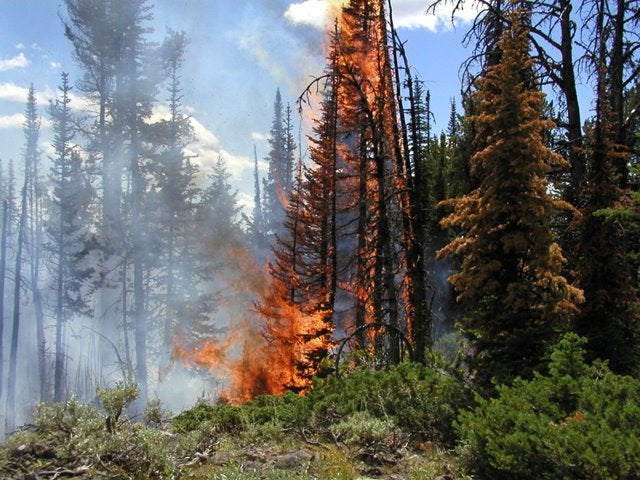The Reality of a Yellowstone Eruption
Kevin Felts 06.22.17

The world is facing something unprecedented in modern times: the grumbling of the Yellowstone super volcano. The last time the Yellowstone volcano erupted was around 640,000 years ago. Ash from that eruption has been found all over the United States.
In prepping, one of our main resources is the past. We can look to historical events, analyze them, and apply lessons learned. But when it comes to a super volcano such as Yellowstone, there are no recent historical references. Over the past few centuries, there have been numerous volcanic eruptions, but few compare to the destructive potential of Yellowstone.
Let’s look at some recent eruptions.
Little Ice Age
In 1257, Mount Samalas erupted, and is credited with possibly triggering the Little Ice Age. The Little Ice Age lasted from around 1257 to the mid-1800s. The global temperature dropped around 1 degree on average.
With the cooler temps came rain and crop failures. We talked about the Little Ice Age and its effects in another article: Single event led to a collapse.
From an article on Nature.com – The 1257 Samalas eruption.
Temperature reconstructions based on tree-ring proxies and ice-core records showed that the emission of 96 to 138 Tg of SO2, the most probable scenarios, would have induced an extra-tropical summer cooling over land of −0.6 °C to −5.6 °C during a period of 4–5 years.
Mt Samalas is part of the Rinjani volcanic complex on Lombok Island.
Mount Samalas released less than 10 cubic kilometers (km3) of material into the atmosphere.
The Year Without a Summer
Even though it falls within the time period of the Little Ice Age, the Year Without a Summer is considered a separate event. There is evidence to suggest it was a volcanic winter caused by the eruption of Mount Tambora in 1815.
The Year Without a Summer was an agricultural disaster. Historian John D. Post has called this “the last great subsistence crisis in the Western world”. The unusual climatic aberrations of 1816 had the greatest effect on most of New England, Atlantic Canada, and parts of western Europe.
The Volcanic Explosivity Index (VEI) is used to quantify the amount of ejected material with a VEI-7 coming in at 100 km3
Yellowstone Eruption
The Lava Creek Tuff (Part of Yellowstone) eruption around 630,000-640,000 years ago released an estimated 1,000 km3 of material into the atmosphere.
- Mount Samalas, 10 km3 – Little Ice Age.
- Mount Tambora, 100 km3 – Year without a Summer
- Yellowstone, 1,000 km3 – ?
How do you prep for something that could be 100 times stronger than what may have triggered a mini-Ice Age?
The Basics
Dust mask – The Centers for Disease Control and Prevention recommends a N95 dust mask.
Exposure to ash can harm your health, particularly the respiratory (breathing) tract. To protect yourself while you are outdoors or while you are cleaning up ash that has gotten indoors, use an N-95 disposable respirator (also known as an “air purifying respirator”).
N-95 respirators can be purchased at businesses such as hardware stores. It is important to follow directions for proper use of this respirator.
List of NIOSH-Approved N95 Particulate Filtering Facepiece Respirators.
Eye Protection – Volcanic ash could cause corneal abrasions in people who wear contact lenses.
Common symptoms include:
- Corneal abrasions or scratches
- Acute conjunctivitis or the inflammation of the conjunctival sac that surrounds the eyeball due to the presence of ash, which leads to redness, burning of the eyes, and photosensitivity
- Eyes feeling as though there are foreign particles in them
- Eyes becoming painful, itchy or bloodshot
- Sticky discharge or tearing
Have goggles for all family members.
Ash – During the Persian Gulf Conflict in 1991, there were worries of chemical weapons being launched into Israel. News footage showed people in Israel putting sheets of plastic over their doors and windows. The plastic was secured with duct tape. It seems like this could work to keep heavy ash out of your home.
Driving – After an eruption, the CDC recommends not to drive.
Do not travel unless you have to. Driving in ash is hazardous to your health and your car. Driving will stir up more ash that can clog engines and stall vehicles.
Check List
Then there is your typical survival check list:
- Flashlight and extra batteries
- First aid kit and manual
- Emergency food and water
- Manual (nonelectric) can opener
- Essential medicines
- Sturdy shoes
- Respiratory (breathing) protection
- Eye protection (goggles)
- Battery-powered radio